After you enjoy a juicy and ripe peach, don’t rush to throw its pit into the trash bin. This tiny seed holds magic in it, as it can grow and transform into a flourishing tree bearing succulent fruits.
While it may take a bit longer than using grafted saplings, the sense of accomplishment and connection to the growth process are unparalleled. In this guide, we’ll walk you through all the steps to grow a peach tree from seeds effortlessly.
Materials Needed
- Fresh peach seeds
- A paper towel
- Aplastic zipper bag
- Well-draining potting soil
- Pots or seed trays
- A larger pot
The Process
Step 1. Extract and Germinate Seeds
Let’s begin extracting seeds from a ripe peach. Rinse them clean and gently pat dry. Place the seeds on a damp paper towel, fold it, and seal it inside a plastic zipper bag. This “pre-germination” mimics winter conditions, activating the seed’s natural germination process. When you finish, just leave it in the refrigerator for about 8 weeks.
After this chilling period, carefully remove the seeds. You’ll notice they’ve swelled a bit. Plant these plump seeds about an inch deep in pots or seed trays filled with potting soil.
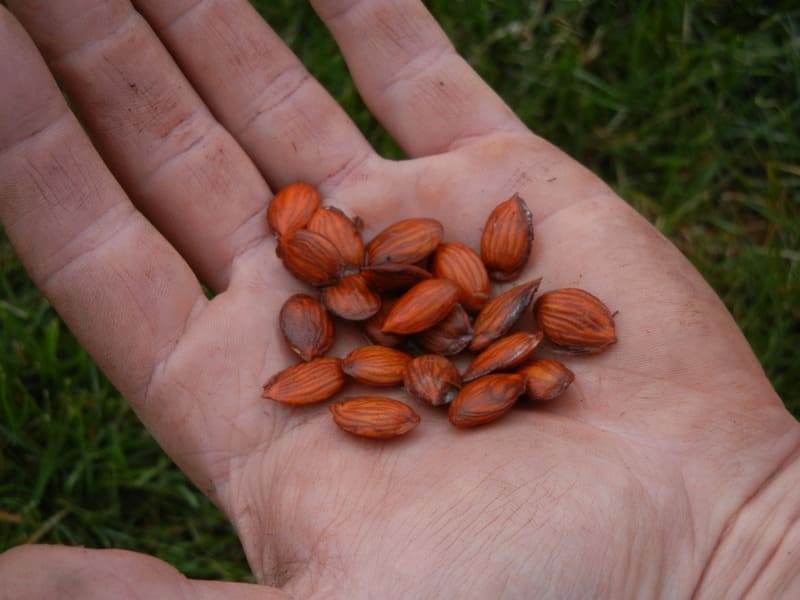
Step 2: Plant And Transplant The Seeds
Once your peach seedlings are around 6 inches tall, it’s time to transplant them into larger pots. Choose containers with drainage holes to prevent waterlogging. Make a hole about 6 inches deep and place the seedling in it. Cover it with soil and water it well. You should be gentle during the transplanting process to avoid damaging the delicate roots.
As the seedlings grow, you’ll notice the appearance of true leaves. This is a sign they are ready for a bigger home. Transplant them into a larger pot or directly into your garden. Choose a sunny spot with well-draining soil.
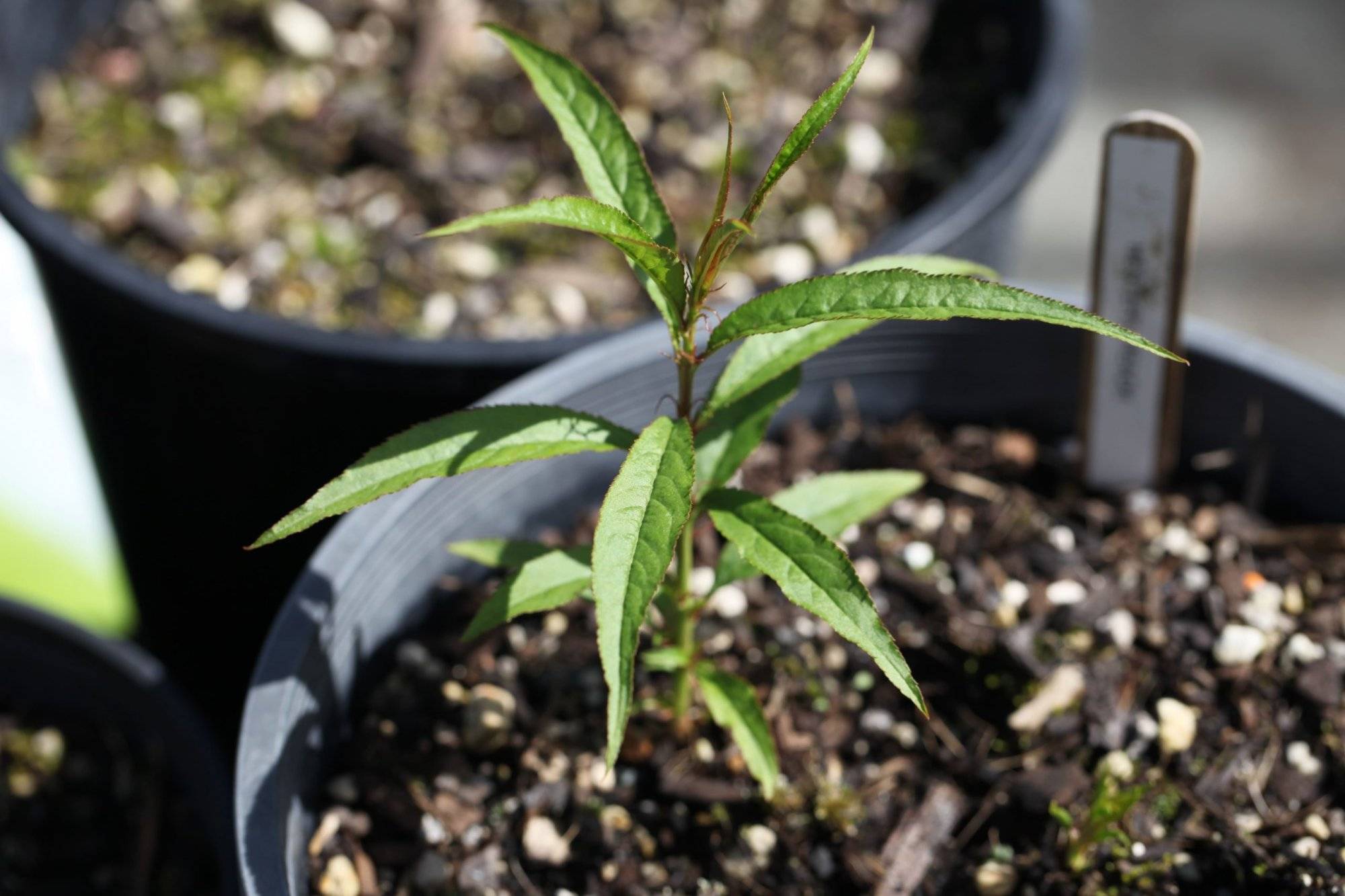
Step 3: Provide Enough Care
1. Watering
Peach trees need regular watering, especially during the first year of planting and during dry periods. The amount of water depends on the soil type, weather, and tree size, but a general rule is to provide about an inch of water per week. You can use a drip irrigation system or a soaker hose to water the tree deeply and evenly. The leaves and fruits should be kept dry, as the wetness can cause fungal diseases.
2. Fertilizing
Peach trees need a balanced fertilizer, such as 10-10-10, to provide them with the nutrients they need to grow and fruit well. You can apply fertilizer in spring when the buds start to swell, and again after the harvest. The common method is to spread the fertilizer around the drip line of the tree and water it well.
3. Pruning
Peach trees need annual pruning in spring, before the buds break, to maintain their shape, improve air circulation and sunlight penetration, and remove dead, diseased, or damaged branches. You can use sharp and clean pruning tools to make clean cuts at an angle. The goal is to create an open center or vase shape, with four to six main branches radiating from the trunk.
In summer, you can thin out some of the fruits, just leave about 6 inches (15 cm) between each fruits to avoid overcrowding the branches and increase fruit size and quality.
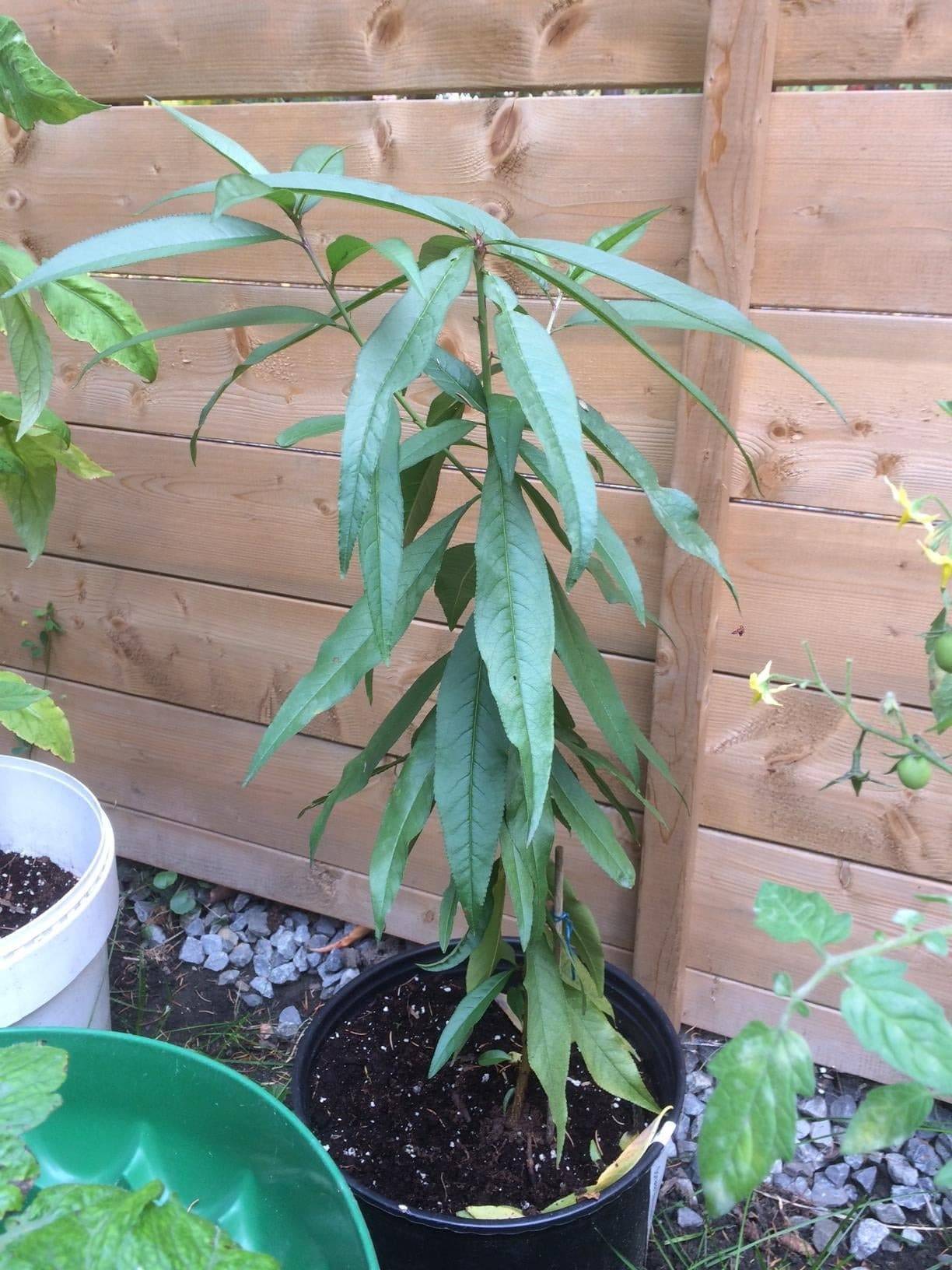
Step 4: Harvesting And Storage
1. Harvest
The best time to harvest peaches is when they are fully ripe and have a yellow or orange background color. The skin may also have a red blush, but this is not a reliable indicator of ripeness. To test the ripeness of a peach, you can gently squeeze it with your fingers. A ripe peach should feel firm but slightly soft, and give a little when pressed.
To pick a peach, grasp it gently in the palm of your hand and twist it slightly while pulling it away from the branch. A ripe peach should come off easily, without tearing the skin or leaving a lot of flesh on the stem. You can place the harvested peaches in a basket or a container with soft padding, such as newspaper or straw. Do not stack them too high or they may bruise each other.
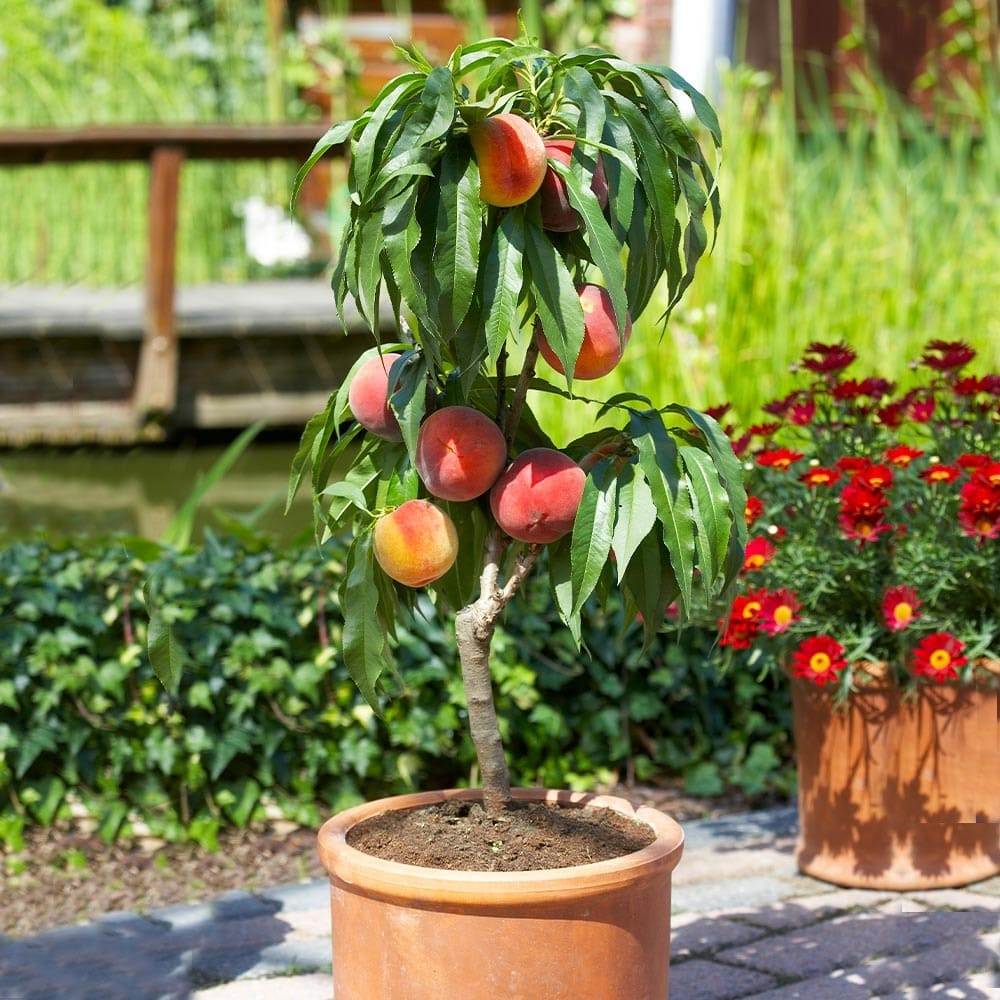
2. Storage
If you want to store peaches for longer than a week, you can freeze them for baking, smoothies, or ice cream. To freeze peaches, you need to blanch them in boiling water for 30 seconds, then peel and slice them. Next, you need to soak them in water with lemon juice or fruit fresh to prevent browning. Then, mix the sugar and fruit fresh and sprinkle it over the peaches.
Drying peaches is another great way to preserve them and use them in granola, trail mix, baking, or as a snack. You can also make jam to preserve peaches and enjoy them on toast, muffins, ice cream, or yogurt.
Bonus Tips
1. Pollination
Most peach trees are self-fertile, meaning they can produce fruit on their own, but cross-pollination with compatible varieties can enhance yield. To self-pollinate your peach, simply take a soft paintbrush and gently touch it from flower to flower, imitating the actions of a bee.
2. Mulch
Peach trees benefit from a layer of organic mulch, such as straw, shredded bark, or leaves, around the base of the tree. Mulch helps conserve soil moisture, regulate soil temperature, suppress weeds, and add nutrients to the soil. You can apply mulch in spring, after the soil has warmed up, and in fall, before the ground freezes.
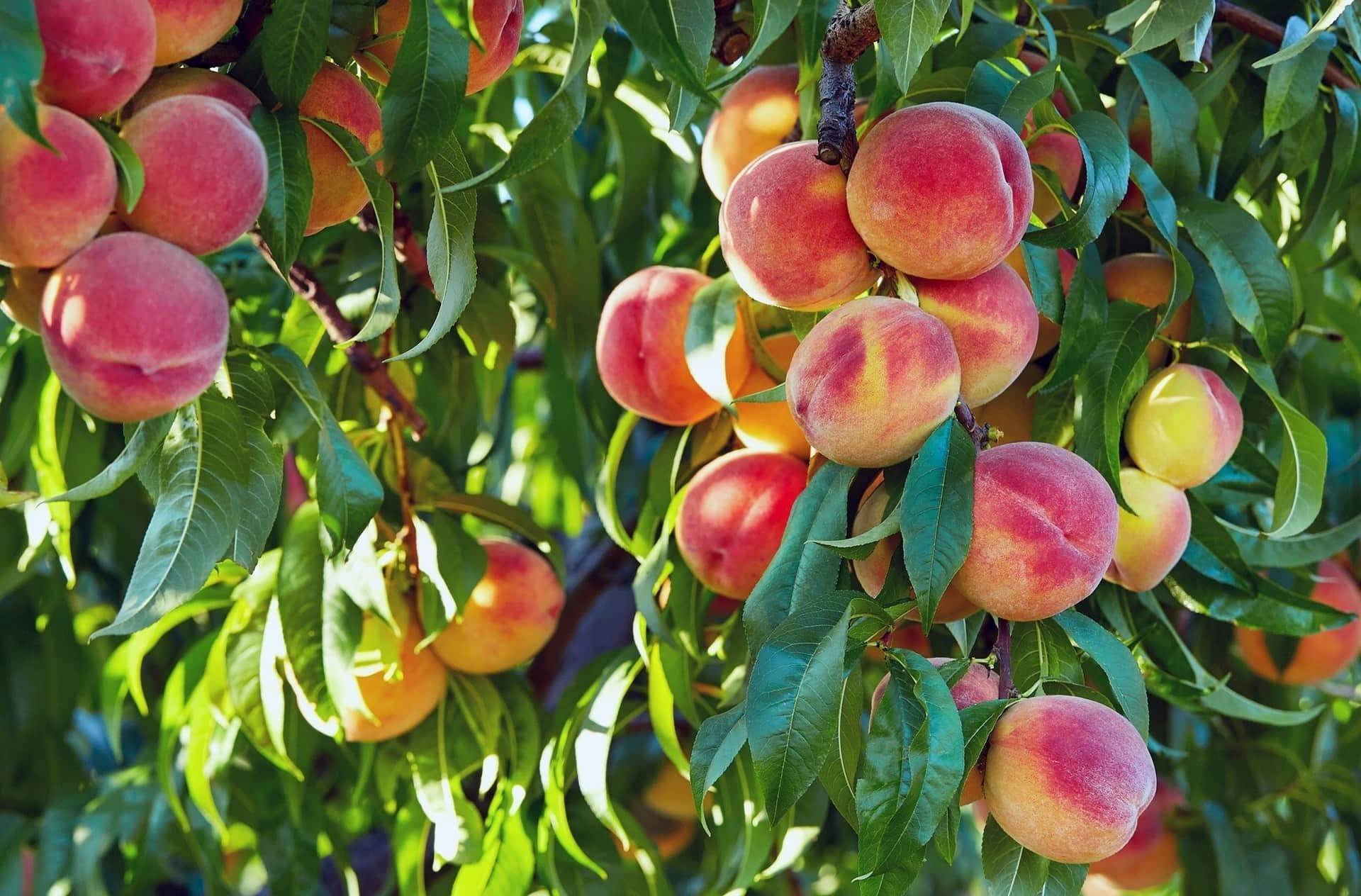
3. Overwinter
Peach trees are susceptible to cold damage, especially in regions with harsh winters. To protect your peach tree from frost, wind, and snow, you can wrap the trunk and lower branches with burlap, tree wrap, or insulation material, and secure it with twine or tape. You can also mound soil or mulch around the base of the tree, up to 12 inches (30 cm) high, to protect the roots.
Peaches are one of the most popular fruits in the world, and nothing beats the taste of a fresh, juicy peach picked from your own tree. Growing a peach tree from seeds is a journey filled with anticipation and satisfaction, and we hope you’ll soon enjoy the sweet rewards of your labor.
